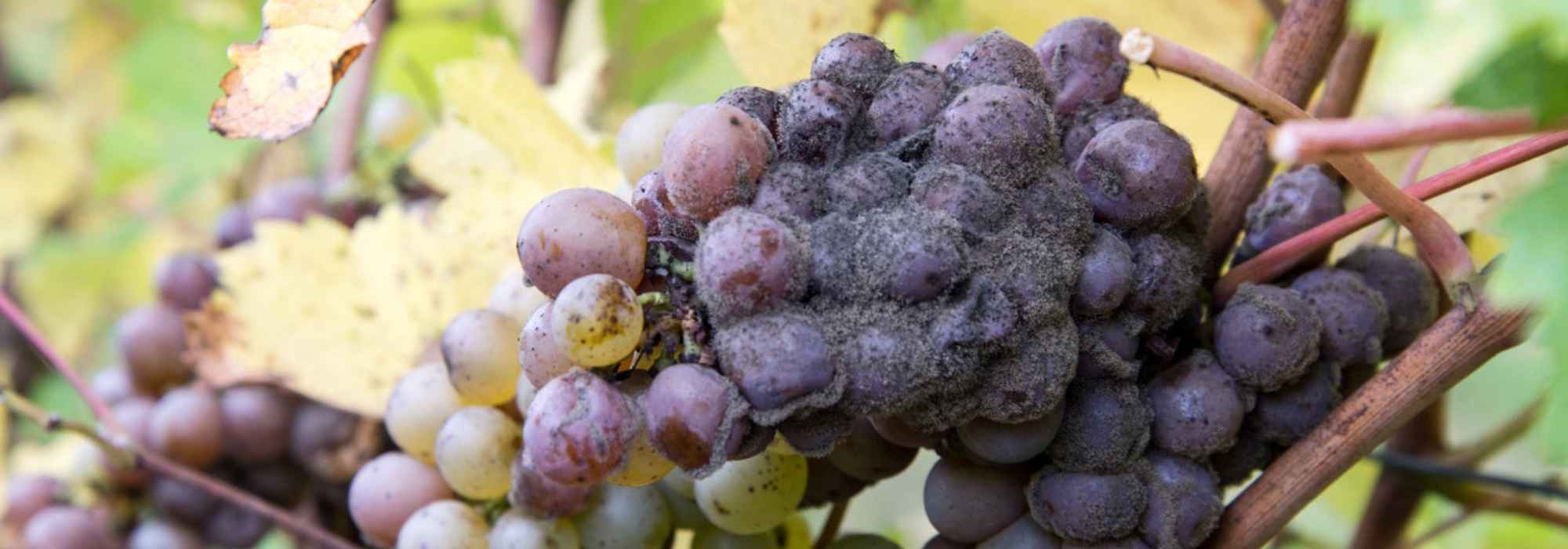
Botrytis or grey mould
Control and treatment of Botrytis
Contents
Botrytis cinerea also called grey mould is a fungus that affects many plants in very humid conditions or when air circulation is poor. This rot is in fact caused by several Botrytis species, sometimes specific to particular plants, such as the lettuce Botrytis, but B. cinerea remains the most widespread species. The disease is difficult to treat; therefore emphasis will be placed on prevention through good growing conditions.
Botrytis or grey mould
This disease appears both in ornamental gardens on peonies, tulip (tulip fire), bedding plants (primrose, begonia…), in vegetable gardens (courgette, cucumber, melon, tomato, strawberry…) and in orchards on raspberries, on apple and pear trees, particularly visible during storage.
Read also
Powdery mildew or white diseaseHow to recognise botrytis?
All parts of the plant can be affected by Botrytis: leaves, buds, flowers, fruits, roots and even the entire plant when herbaceous.
Des brown spots very quickly become covered with a grey felt-like growth then the organ rots and dries out. Les flowers wither or abort and les fruits quickly become inedible, taken over by a soft rot.
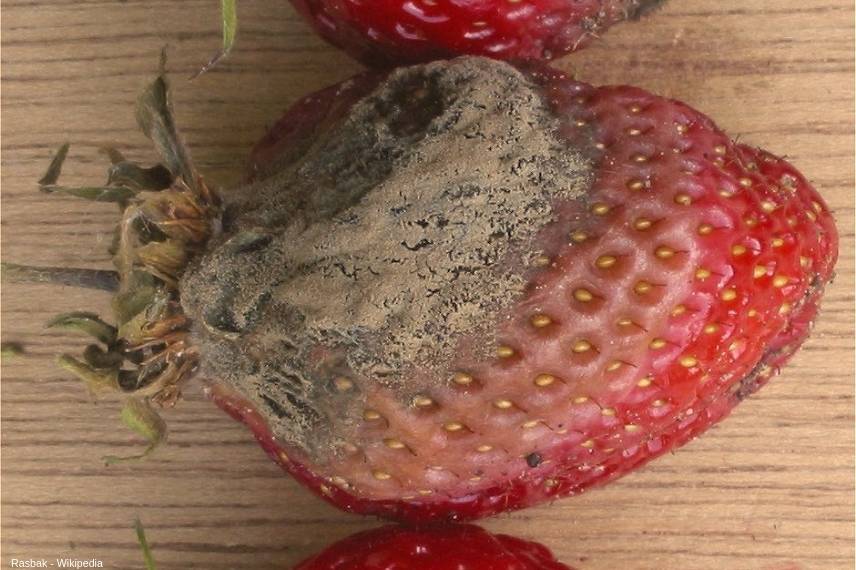
Apples and pears
On apple and pear fruits, the disease called « Botrytis of the eye » begins under rainy conditions at time of flowering. Spores, after overwintering in crevices of the bark, sometimes enter at the eye of young fruits. The disease then develops very slowly so that it is often during storage that the rot becomes visible, subsequently spreading rapidly. It contaminates other fruits if they have been wounded and even healthy fruits in contact with infected ones via the lenticels of the fruit (pores of the skin).
Courgettes
Courgettes are often affected and show a rot at the blossom end of the fruits, where remains of the flower, often contaminated, persist. The fungus can also be transmitted to leaves by contact with flowers, appearing as rather circular spots that frequently start at the margin of the lamina. The tissue progressively undergoes necrosis and may be surrounded by a yellow halo. Stems may present a canker.
Botrytis strains have emerged worldwide that are resistant to several synthetic fungicides.
Discover other Grapevines
View all →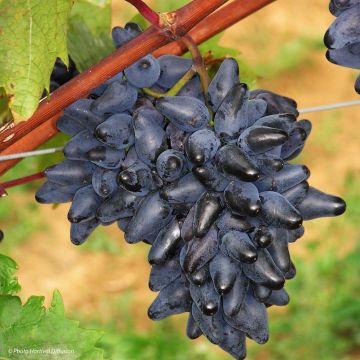
Available in 1 sizes
Available in 1 sizes
Available in 1 sizes
Available in 1 sizes
Available in 1 sizes
Available in 1 sizes
Available in 1 sizes
Available in 1 sizes
Available in 1 sizes
Available in 1 sizes
Factors favouring botrytis
Fungus survives on any plant debris (including seeds) or in soil as spores (conidia, sclerotia) or mycelium and can contaminate several hundred different plants, making it ubiquitous.
Germination of fungus spores is favoured by very humid conditions (93% humidity) and temperatures slightly above 20 °C for 24 hours, especially in spring and autumn outdoors and year-round under cover. It takes 5 hours to germinate at 20 °C.
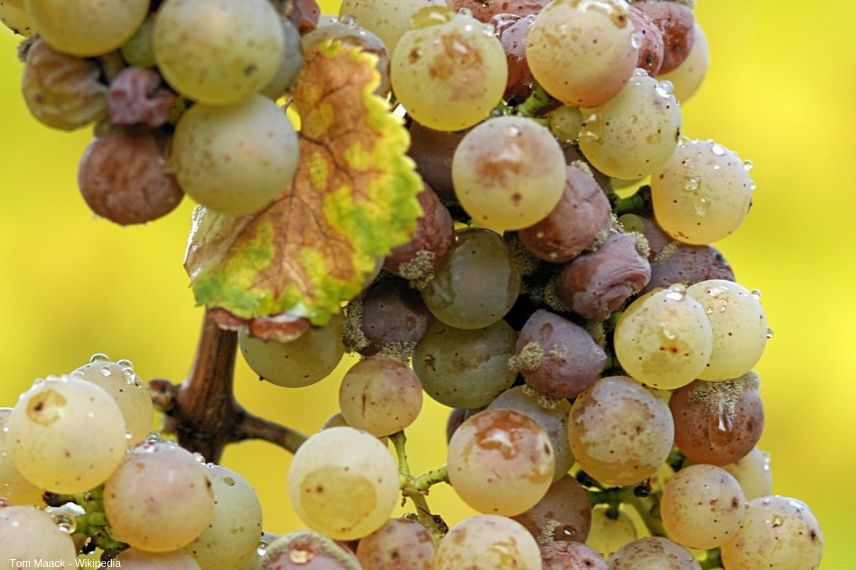
This fungal disease is very contagious, so it is important to remove plants (in case of young plants, remove whole plant) or only diseased organs or fruits as early as possible. Take care not to contaminate entire bed when removing organs covered with grey mould, as these are near‑microscopic spores that spread like dust through the air. Avoid splashing caused by rain or watering.
Spores are widespread in nature, so difficult to eradicate; however, equipment for sowing, trays and shelter shelving should be disinfected (bleach, hydrogen peroxide, vinegar or others) to prevent infestations.
Read also
Brown rot of fruit treesControl and treatment of Botrytis
Control is very difficult, so it is prophylactic measures that will prevent spread of the fungus :
- Do not plant too closely and remove excess foliage (in dry weather) to promote good air circulation. On courgettes, remove only yellowed leaves in contact with soil and leave a sufficiently long petiole so Botrytis does not reach the stem too quickly. Scrape out young cankers on stems and paint with a fungicidal treatment.
- Avoid watering in the evening sensitive plants because moisture on leaves will not have time to dry before night-time cooling. Avoid splashing caused by rain or watering.
- Avoid damaging fruit when harvesting apples and pears,
- Avoid excess nitrogen which weakens plant tissues but also nitrogen deficiency (which causes chlorotic leaves that provide ideal nutrient bases for B. cinerea).
- Spray nettle manure preventatively on fruit trees,
- Spray strawberries and raspberries with a horsetail decoction as curative or preventive (see recipe below)
Prepare horsetail decoction for strawberries, raspberries, potatoes
- Soak 22.5 g of dried horsetail in 1 litre of water for 30 minutes then boil for 45 minutes
- Let cool
- Strain the decoction through a fine sieve then dilute at a rate of 1 litre of decoction to 9 litres of water.
(source 2019 ITAB Institute of Organic Agriculture and Food)
- Subscribe!
- Contents
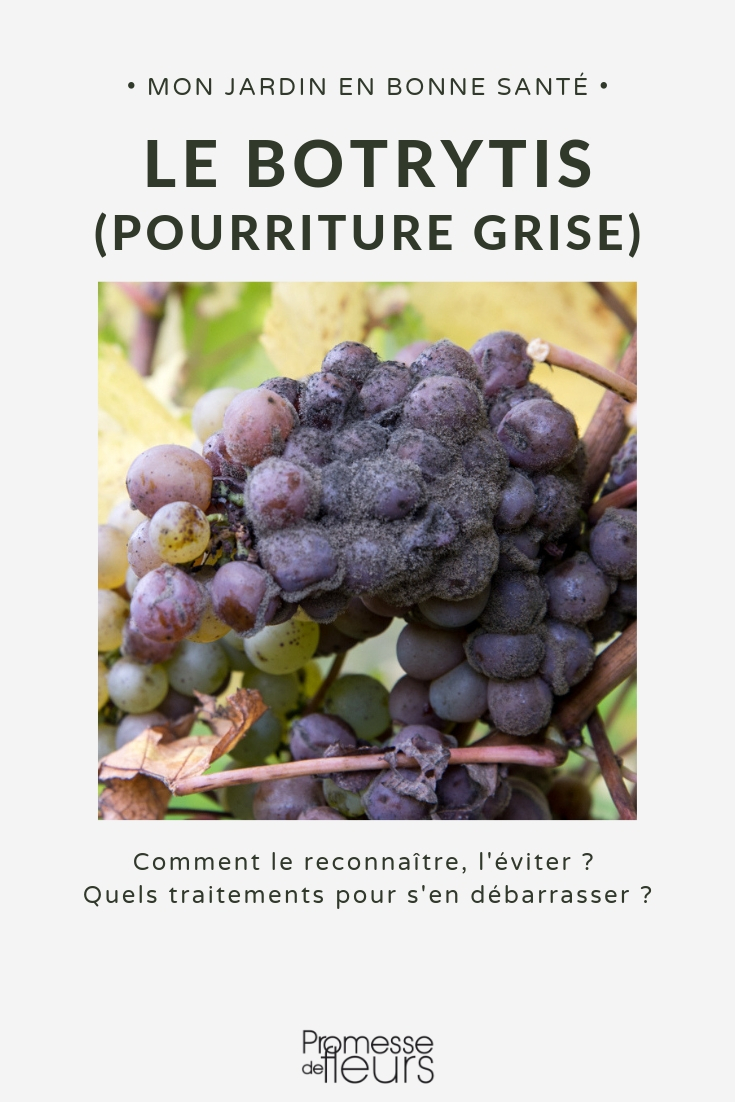































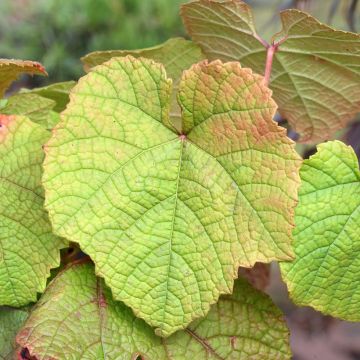
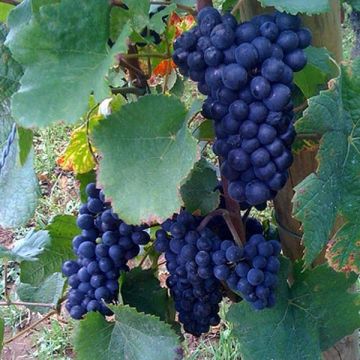
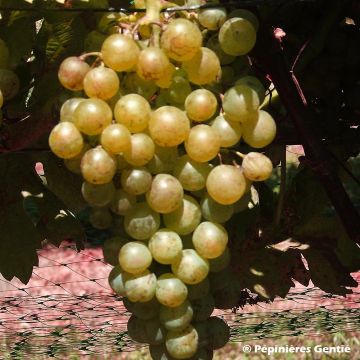
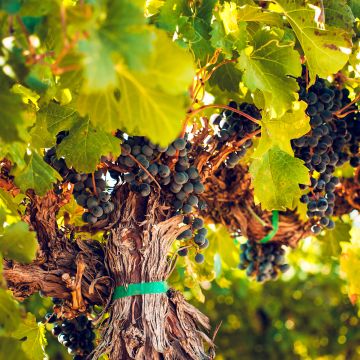
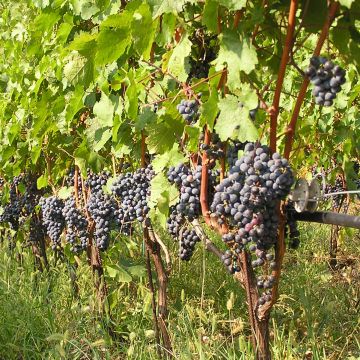
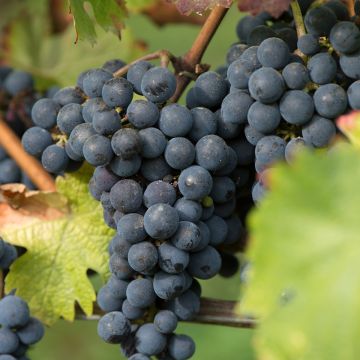
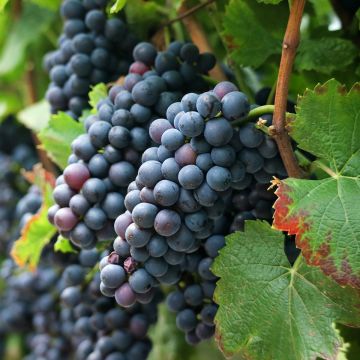
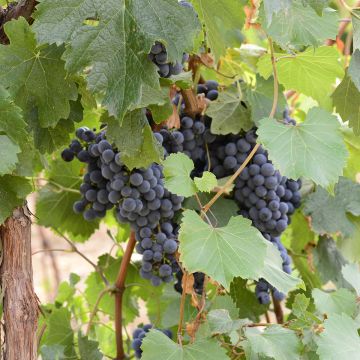
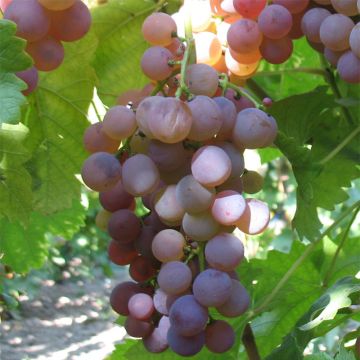
Comments